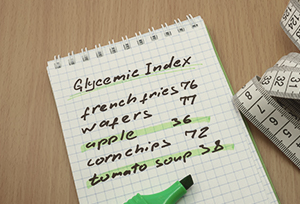
Most types of rice have an indefinite shelf life. The main challenge, however, is keeping it free of dust, insects and other contaminants.

Accept it or not, we Asians love our rice! It has been our comfort food ever since we started eating ‘solid food’. And why should it not be? It is easy to cook and also nutritious as well as energy-giving. Most importantly, it is a far healthier choice than the foods that come out of tinned cans, ready-to-eat boxes and fast food joints.
Rice, being an integral part of our meals on a daily basis, it is a no-brainer that purchasing in larger quantities makes most economical sense. Most types of rice have an indefinite shelf life. The main challenge is, however, keeping it free of dust, insects and other contaminants.
So exactly how long does rice last if it is uncooked? White, Jasmine and Basmati rice all have an indefinite shelf life, when stored right. The exception, however, is brown rice — thanks to its higher oil content, it has a shorter shelf life.
To maximise the shelf life of rice, store in an ambient and cool dry area; after opening the package, place the rice in a sealed airtight container. Cleaning and sanitizing the containers for the rice is important. Rice is not typically sensitive to any type of container – plastic, glass or steel. What is important is that it is clean.
Stored rice will absorb as much oxygen as it can, especially if stored in an air tight container. Unclean containers might not be advisable because the rice will absorb some of its dirt and smell over time and when cooked, it will not have the same quality flavour like it is supposed to.
In the recent times, brown rice has gained the favour of many of us because of its higher nutritional values. What makes brown rice not only more nutritious than white rice, but also extra nutty and flavourful, is that its bran and germ are still attached, which contain oils that are full of good, unsaturated fats. While that's great from a health and taste perspective, those oils unfortunately go rancid pretty quickly. Extra care has to be taken when storing brown rice.
So is there a better way to avoid that big bag of brown rice going rancid? Here are three simple things to remember:
Right quantity
First, the most important way to avoid rancid brown rice is to get smaller quantities. While it may seem economical, try not to be tempted by those giant bags — your best bet is to buy in smaller amounts to risk wasting any rice, unless, of course, you have a very large family with a huge appetite for rice!
Right container
Transfer the rice to an airtight container after bringing it home – whether it's a glass jar or just a tightly lidded plastic container. Exposing the oils to oxygen is a major reason they start to deteriorate and spoil.
Right environment
The ideal condition for brown rice is a cool, dark space and if stored in an airtight container it can remain good for about six to nine months.

While we have looked at the basic storage tips, there is one other important element we need to protect our precious grain from – the creepy crawly invaders!
Yes, it is not uncommon to find an odd cockroach or some insect invading our kitchen cupboards. Rice happens to not only be a favourite among us humans but also a creature called the weevil which loves to breed in the rice grains and eventually make it inedible over some time when it empties the inner rice grain.
Fortunately, there are some ways we can protect rice from these insects:
Freeze them!
Keep your stored rice in the freezer for 4-5 days. This process will kill the already existing insects, such as the weevil, that might have just started attacking your grains. This method will also avert any insect eggs from hatching.
Seal them!
One of the best ways to protect rice from insects is to store them in zipped or sealed plastic bags. If you have a large quantity of rice to be stored and prevented from insects you may not be able to store it in your freezer. In such a case, put the rice in sealed plastic bags to keep insects at bay.
Separate them!
If the insects have already invaded your rice, then immediately empty your entire stock. Use the ‘divide and rule’ policy – separate them! During the preparation of rice cooking, rinse the rice and these weevils will naturally stay afloat and you can simply pour them away before filling in water to cook the rice. Another method will be to put them on a large tray and keep it out in the sun for about 3-4 hours. The heat will make them want to walk out of the rice tray, making it pest free. For portions that you think are okay, put them in sealed plastic bags. For an extra measure, you could add a couple of dried red chillies in it. The pungent smell of chillies will keep the pests away.
We rice lovers, must take absolute care of our favourite grain. And ensuring we get to enjoy every grain we purchased is not difficult at all. One only needs to ensure that we buy the amount we need, and not simply go overboard when we see a ‘special offer’ deals sign in the supermarket; store it right, and inspect and clean our kitchen cupboards regularly.